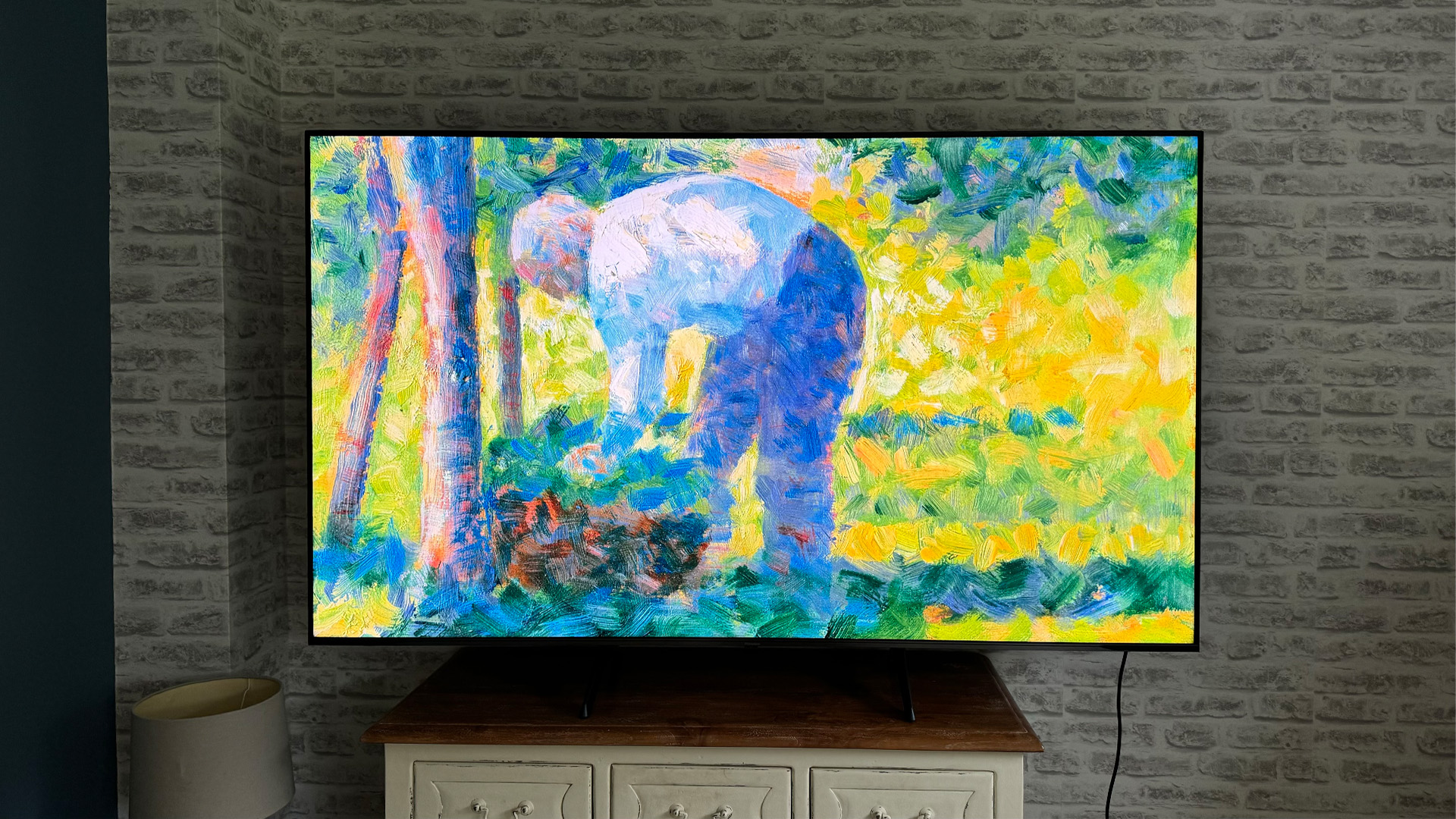
At first glance, the 75E7NQ Pro looks like it’s going to be another perfect example of why Hisense is causing such a headache for the longer-established TV brands. Not only does it serve up a home cinema-friendly 75-inch 4K screen for less than many 55-inch TVs cost, but it also boasts a hugely promising feature count that includes a panel with a healthy 220 dimming zones, a Quantum Dot colour system, support for all four of the main HDR formats, a strong roster of gaming features, and a content-rich smart system that even includes one of the first implementations of the new Freely service.
But while other screen sizes in the E7NQ Pro range might be home cinema dream machines, an unfortunate LCD panel technology choice means the 75-incher doesn’t quite make the grade.
Price
While it’s not unheard of to find a 75-inch TV selling for under £1300 (around $1690 / AU$2520), it’s certainly not common. And when it happens we usually expect such a bargain basement TV to be packing a bare minimum of interesting and premium features. The 75E7NQ Pro, though, somehow manages to combine its eye-catching affordability with a feature count that would normally class as at least mid-range, and maybe even premium in a couple of areas. So, at this stage, it’s shaping up to be one of 2024’s biggest (literally) TV bargains.
The 75E7NQ Pro is fairly widely available across Europe, but while a page on it can be found in a dark recess of Hisense America’s website, it doesn’t appear to actually be on sale there. There’s no sign of it in Hisense’s Australian range, either.
Design
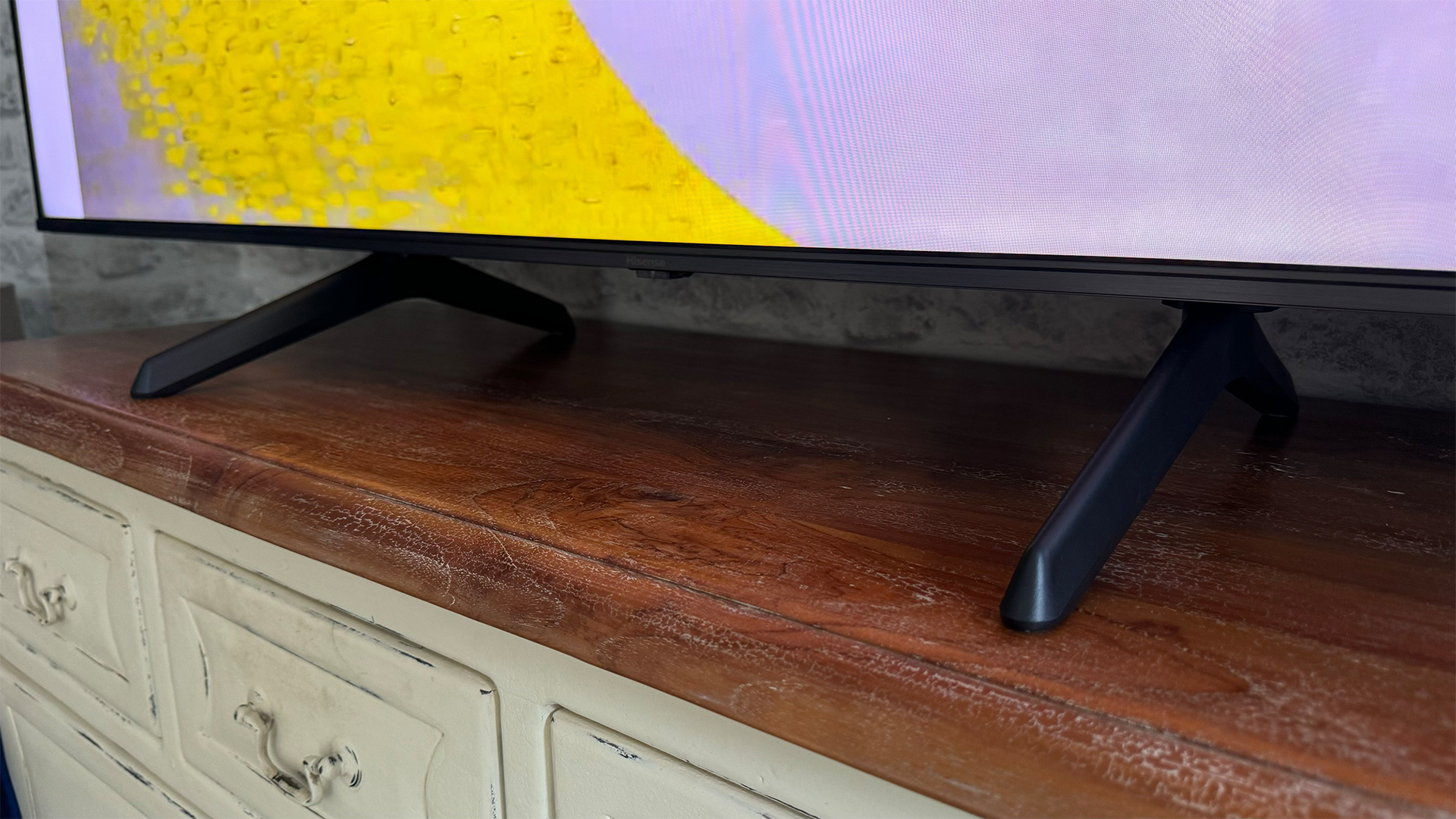
The step up from 65 to 75 inches always strangely feels much more impressive than the step up from 55 to 65 inches. It’s kind of like jumping from ‘TV’ to ‘home cinema’. So not surprisingly the sheer screen acreage of the 75E7NQ Pro instantly makes an impression – especially when you think how little you’ve had to pay for it.
The 75E7NQ Pro’s budget nature is, though, a little more evident in other aspects of its design. Its construction features a lot of fairly lightweight plastic, and it also sticks out a fair bit further around the back than most of today’s TVs. The frame around the screen is reasonably trim but looks a little cheap, and the feet you can place the TV on if you’re not wall-mounting it look pretty basic and, again, stick with plastic for their construction.
The feet can, though, be positioned either wide apart or relatively close together, to suit different sizes of mounting furniture, and we also appreciated the little dash of style introduced by the narrow strips of grille-like texturing Hisense has sneaked under each bottom corner of the 75E7NQ Pro’s epic screen.
The love of plastic extends to the 75E7NQ Pro’s big, button-heavy remote control. While this remote doesn’t provide an exactly premium way of interacting with the TV, it does carry a mic button to support voice control, as well as direct access buttons for no less than nine of the video streaming world’s most popular services.
Features
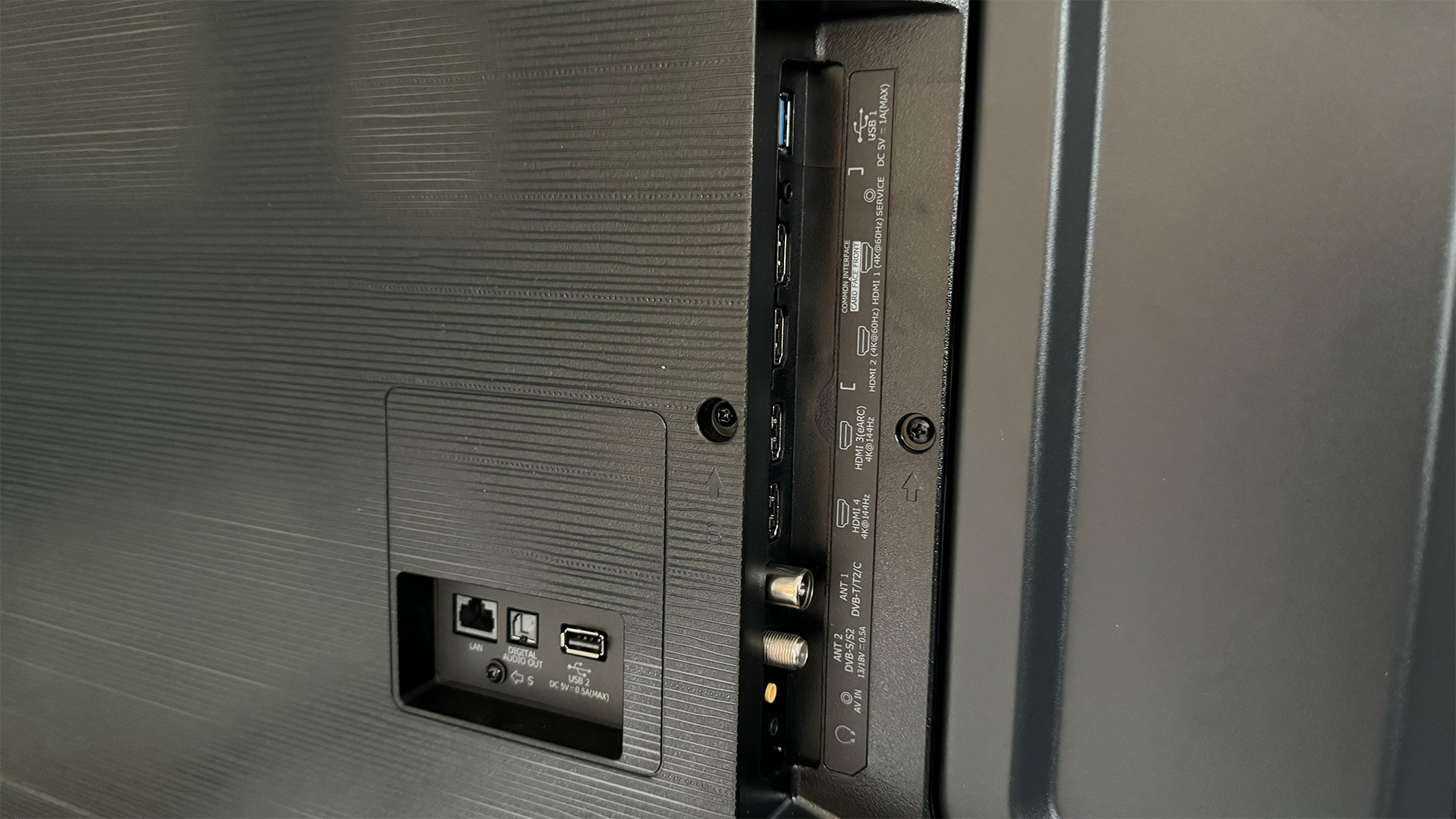
A strong feature list for its money kicks off with the 75E7NQ Pro’s 4K screen supporting all four of today’s main HDR formats: HDR10, HLG, HDR10+ and Dolby Vision. It also delivers its colour using Quantum Dots (which can support more brightness and a wider, more accurate colour range than regular colour filters), and it features a Full Array with Local Dimming (FALD) backlighting system.
The local dimming operates across a very impressive (for a £1299 75-inch TV) 220 separately controlled lighting zones, and Hisense claims the screen is capable of delivering a par-for-the-money peak brightness output of around 600 nits.
The 75E7NQ Pro goes well beyond par, though, with its gaming features. Two of its four HDMIs can handle 4K/120Hz natively, with 144Hz frame rates possible via a motion accelerator system. The same two high-bandwidth HDMIs also support variable refresh rates in the standard HDMI and AMD FreeSync Premium formats, and all four HDMIs support ALLM switching when a game source is detected.
Hisense’s TV can even bring up a dedicated Game menu, showing signal information and granting access to a few gaming assistants, when it’s running in its fast-responding game mode.
This mode gets the time the 75E7NQ Pro takes to render incoming video down to just under 16ms with 60Hz signals – a respectable result that shouldn’t disadvantage you too much with response time-based games. Hisense has equipped the TV with a Dolby Vision game mode, too, so that gamers can play in the premium HDR format and still enjoy a responsive experience.
The 75E7NQ Pro smart features come courtesy of Hisense’s own VIDAA smart platform which, while not the most glamorous-looking interface around, is easy to use and carries bags of content. In fact, alongside global favourites such as Netflix, YouTube, Prime Video, Apple TV and Disney+ you can find one of the earliest working versions of the UK’s Freely service, which lets you watch any BBC, ITV, Channel 4 and Channel 5 channels via live streaming.
VIDAA supports voice control, too, if you’re comfortable with talking to a TV, while the 75E7NQ Pro’s four HDMI connections are backed up by two USB ports, a 3.5mm audio output, an optical digital audio output, and an Ethernet port. Plus, of course, there’s the now-expected wi-fi and Bluetooth 5.2 wireless support, complete with DLNA and Apple Airplay 2.
The one Achilles Heel on the 75E7NQ Pro’s spec sheet is its use of an IPS type of LCD panel. While these panels support wider effective viewing angles than alternative VA panel types typically do, they also make it harder to control the light passing through their liquid crystals, generally leading to reduced contrast.
Not all E7NQ Pro TVs use IPS panels, though. The 55, 85 and 100-inch models get VA panels, leaving only the 65-inch set joining the 75E7NQ Pro in going the IPS route. So what we’re about to say about the 75E7NQ Pro’s picture performance should not be taken as applicable to any other models in the range bar the 65-inch.
Picture
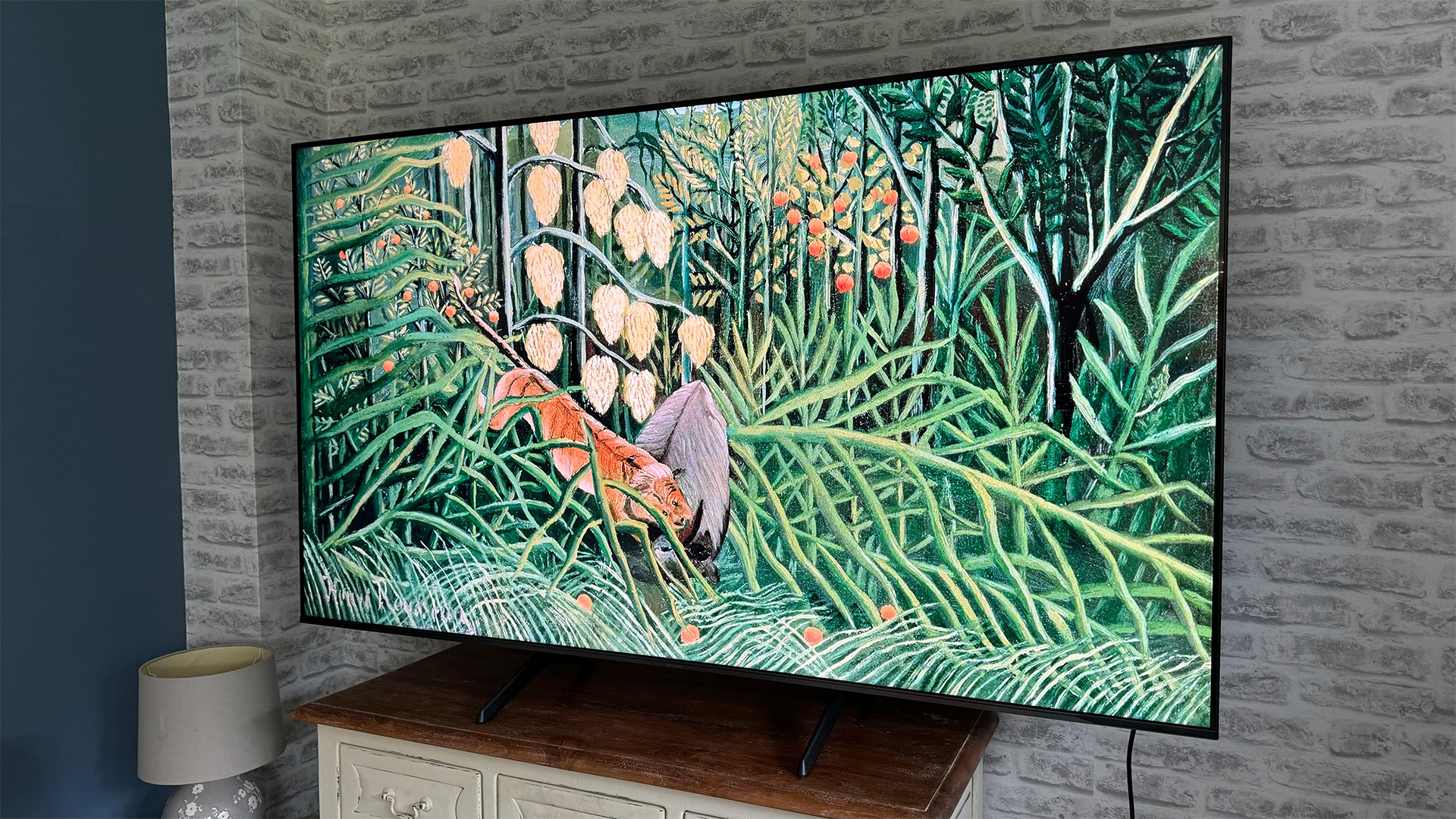
Let’s deal right away with the impact of the 75E7NQ Pro’s IPS panel. As expected, alas, it pretty much single-handedly prevents the 75E7NQ Pro from delivering – at least some of the time – the sort of pictures that we suspect many people in the market for a 75-inch TV will be looking for.
The problem, predictably, is that depending on which picture preset you’re using, dark film and TV scenes, especially with high dynamic range sources, either suffer with a flattening grey overwash, or are afflicted by pretty heavy-handed backlight clouding and blooming inconsistencies.
To be more precise, in the TV’s default Standard picture preset, while black colours actually get much deeper than we’d expect to see from an IPS TV, the cost for this is numerous quite bright and surprisingly (given there are 220 dimming zones in play) widespread areas of light blooming around any strong bright picture highlights. This blooming can slip into black bars above and below wider-than-16:9-aspect-ratio films, too, at which point it takes on a whole extra level of distraction. Especially if the bright image highlight causing this bloom moves across the picture, dragging the bloom in the black bar with it.
If you switch to the 75E7NQ Pro’s Filmmaker or Cinema picture presets, the blooming problems become much less noticeable, for the simple reason that these modes turn off or greatly reduce the aggressiveness of the set’s local dimming system. The trade-off for this, though, is that dark scenes look much flatter and more greyed-over. And, unfortunately, we aren’t able to find any combination of more in-depth picture settings that gives us a convincing balance between the different dark scene pros and cons.
One good thing about the 75E7NQ Pro’s handling of dark scenes is that they tend to retain good levels of subtle detailing, no matter what preset you’re watching. It’s worth adding, too, that the 75E7NQ Pro’s various contrast limitations are much less glaring if you’re watching the TV in a fairly bright room. But again, it seems to us that if you’re going to bring a 75-inch TV into your home, you probably fancy using it for at least the occasional lights-down home cinema night. At which point, the panel’s problems become hard to ignore.
Making the IPS panel issues all the more frustrating is the fact that the 75E7NQ Pro doesn’t get that much benefit, in truth, from the technology’s superior viewing angles. You can watch from a touch wider than you can with most regular VA panels before contrast reduces, but the difference is hardly night and day.
The IPS issues are also frustrating because in some ways the 75E7NQ Pro’s pictures are very enjoyable for such an affordable set. For starters, pictures actually look brighter with HDR content than the claimed 600-nit light peaks might suggest – especially with HDR images that flood the whole screen with brightness. In its Standard preset, Hisense’s TV also manages to find an extra light gear for small bright HDR highlights, regardless of whether they appear against a dark or bright backdrop.
We need to stress, though, that this intensity only appears in the 75E7NQ Pro’s Standard preset because it deploys both an aggressive local dimming implementation and, with HDR10 sources, a dynamic tone mapping solution designed to optimise HDR content playback to the screen’s capabilities. HDR images look much flatter and less dynamic in the TV’s Filmmaker Mode and Cinema presets, with less intense brightness peaks being joined by much greyer black levels than the Standard mode can deliver. So while the Filmmaker Mode is the only one that really delivers quite accurate-looking colour tones, it just doesn’t gel well enough with the panel’s core capabilities to make it an enjoyable watch. If accuracy is a big deal to you, the 75E7NQ Pro isn’t a great option.

Screen size 75 inches (also available in 58in, 65in, 85in, 100in)
Type QLED
Backlight Full array LED with local dimming
Resolution 4K
HDR formats HLG, HDR10, HDR10+, Dolby Vision
Operating system VIDAA
HDMI inputs x 4 (2 x 48Gbps HDMI 2.1)
Gaming features 4K/120Hz, VRR, ALLM, Dolby Vision gaming
Input lag at 60Hz 15.6ms
ARC/eARC eARC
Optical output? Yes
Dimensions (hwd, without stand) 96 x 167 x 7.9cm
In the most all-round watchable Standard mode, the 75E7NQ Pro’s brightness also contributes to startlingly vibrant and rich colours. This further sells the uplift to picture quality you hope to see from HDR sources but seldom do with such affordable big-screen TVs, and makes HDR pictures look punchy in bright rooms as well as dark.
Sometimes this vibrancy comes at the expense of a little nuance in subtle blends and tonal shifts, leaving the purest tones sometimes feeling a touch cartoonish and some skin tones a touch waxy. Occasionally the very brightest areas of colour can look a little bleached compared with the impressive vibrancy on show elsewhere, too. For most of the time, though, the 75E7NQ Pro does much better justice to the wide colour gamut used in HDR mastering than we’d expected for its money.
The 75E7NQ Pro looks crisp and detailed with native 4K footage generally, with the slight colour coarseness only occasionally taking the edge off things. The set’s upscaling to 4K of HD sources isn’t up there with the best in the TV world when it comes to adding sharpness and detail, but it is at least astute enough to not exaggerate any noise a source might contain. The sharpness of both 4K and HD images holds up reasonably well, too, with 24p movie sources, thanks to some respectably clean motion handling.
The 75E7NQ Pro’s image strengths generally translate well to gaming. Games look crisp, vibrant and fluid, and the set handles both high and variable frame rates cleanly, without instability or blurring. Dark environments can look a bit grey, especially as the local dimming system seems to be affected by the need to get response times low for gaming – though, as with video sources, shadow detailing remains strong enough to ensure you can still make out lurking enemies in dark corners well enough.
Sound
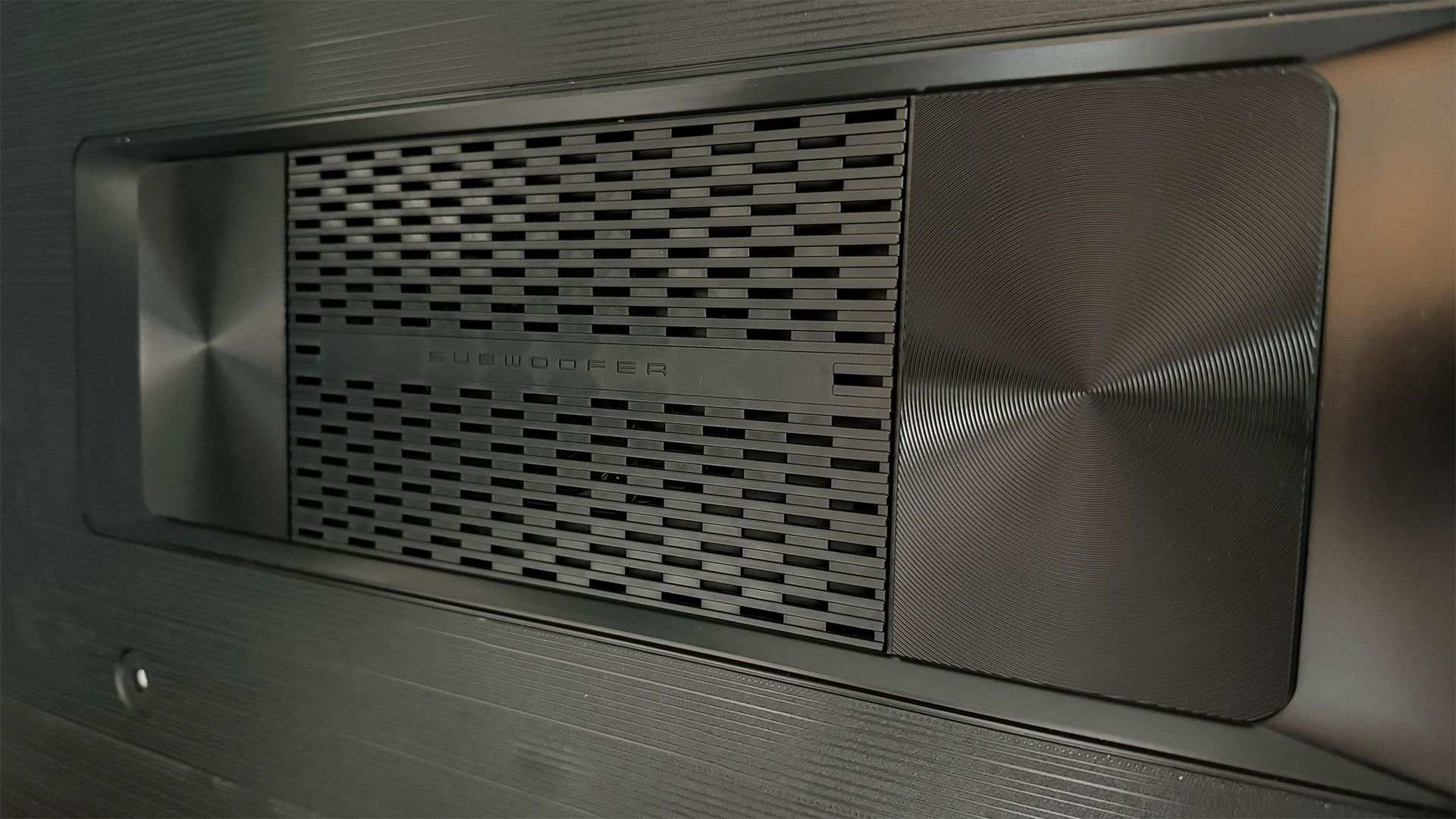
The Hisense 75E7NQ Pro’s impressive specification for its money extends to its audio system, which finds 2 x 15W main speakers backed up by a large 20W subwoofer mounted on the TV’s rear. It’s not surprising, then, to find the 75E7NQ Pro able to both pump out pretty prodigious volume levels and cast its sound a decent distance beyond the TV’s edges without losing cohesion. The sound staging includes a sense of height as well as width, too, helping it get at least a little value from the TV’s built-in Dolby Atmos decoding.
Vocal tracks stay where they should be, locked to the screen, rather than seeping into the rest of the mix, and they are never overwhelmed by other elements of the sound.
The speakers have enough dynamic range and robustness, too, to deliver a reasonably convincing sense of escalation during action and horror set pieces, even at high volumes, while that meaty subwoofer adds impact and low-frequency scale without suffering major distortions or dropouts.
Voices can sound a bit like they’re coming from a cave at times, and very dense movie mix moments can start to sound slightly shrill and compressed. In a perfect world, too, sound would project forward more. Overall, though, the 75E7NQ Pro sounds pretty good for its money.
Verdict
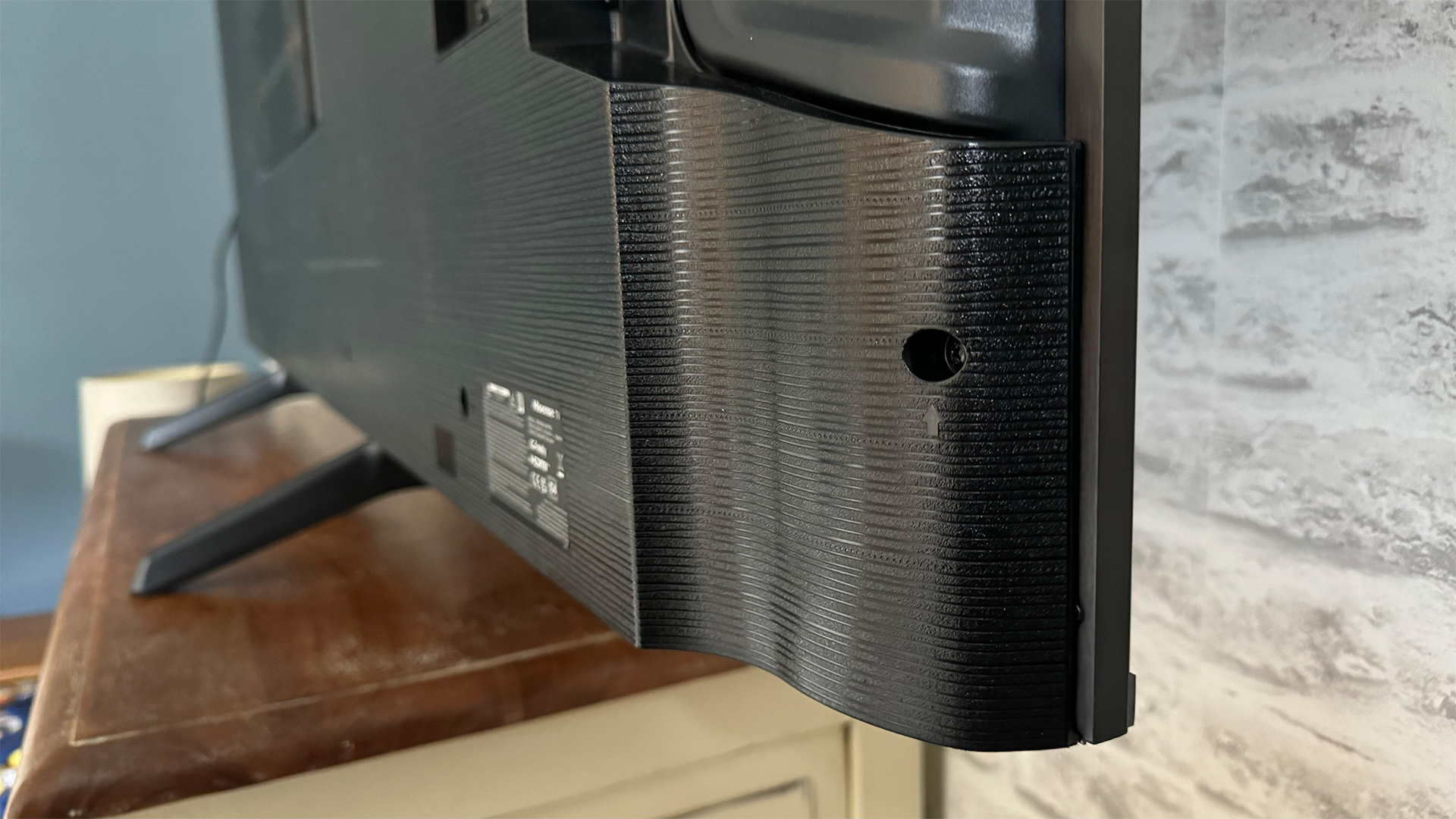
The Hisense 75E7NQ Pro does a lot of things right. Its smart system is comprehensive and easy to use, in most ways its pictures outperform its price point, and those pictures are backed up by decently potent (if occasionally slightly coarse) sound. Sadly, though, the 75E7NQ Pro’s difficulties handling dark scenes ultimately make it hard to recommend for anything other than very casual use.
SCORES
- Picture 3
- Sound 4
- Features 4
MORE:
Read our review of the TCL 65C845K
Also consider the Samsung Q80D
Read our Sony 65X85L review
Best TVs: flagship OLEDs and affordable flatscreens tried and tested







